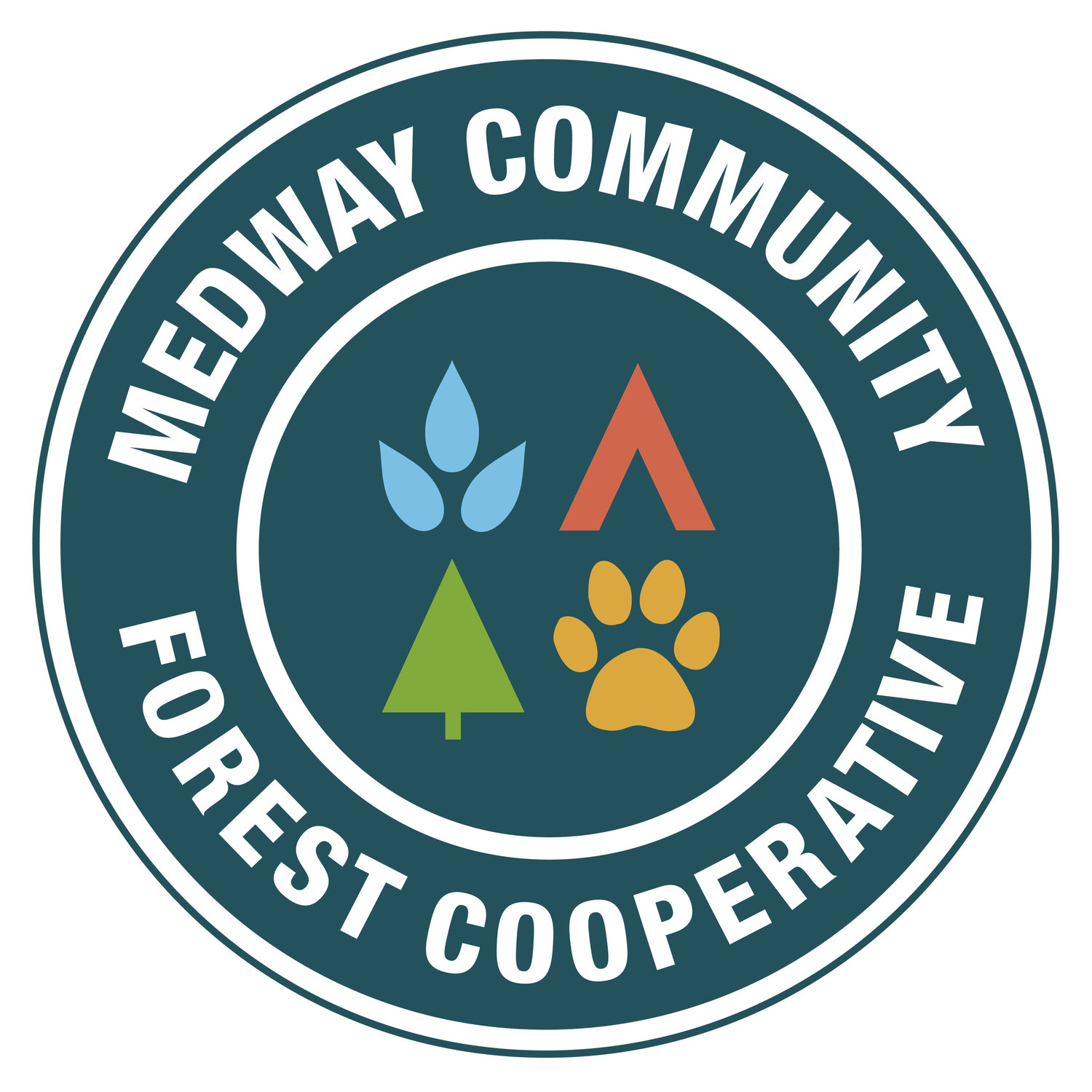Harvest Blocks Open for Comment - December 2024
As of December 23rd, we have new harvest blocks available for comment on the province’s Harvest Plan Map Viewer (HPMV). They will be open until Sunday, February 2, 2025, and we encourage our members and the community to provide feedback. If you’re not sure where to find our license area in the viewer, we are located in Annapolis County, nestled between the Medway Lakes Protected Area, the Tobeatic Wilderness Area, and Kejimkujik National Park and Historic Site.
We’d prefer if you provided comments directly through the viewer, however, you can also contact us through email.
Before we describe in more detail the approaches we will be taking in these proposed harvests and some of the additional planning measures we employ at the Medway Community Forest Cooperative (MCFC), we just want to acknowledge that it’s been a while since we posted any harvests for public comment and that this suite of proposed harvest areas is cumulatively larger than many we have posted in the past. This is part of an ongoing planning effort that aims to increase the area of approved harvests at MCFC. This will allow us more management flexibility, improve our returns on harvested products and allow us to complete the infrastructure upgrades necessary to facilitate management across our license area. This will be the first of a series of harvests that will be posted for public comment in the coming months, so you can expect to hear from us again in early 2025.
Posting harvest plans for public comment is one step in our management process, and feedback from the public, along with our additional planning steps, may lead to changes in the plans shared today. Changes to final harvest boundaries, harvest prescriptions, implementation of special management practices like buffers or seasonality restrictions or even the removal of an area from harvest consideration are all possible outcomes at this stage of the process.
In addition to public consultation through the HPMV, MCFC staff will take additional steps ahead of implementing any of the proposed harvests described below. We will work with local experts to complete surveys for at-risk songbirds and rare lichens in habitats where these species are likely to occur. If they are found, we will add buffers and/or seasonality restrictions to protect them. During operational layout, we will identify and protect sensitive features such as seepages and wet areas, excluding them from the harvest area. We will identify trees with unique biodiversity value – such as mast producing trees, underrepresented species, or trees with nesting or feeding cavities – and use tree marking to designate them for permanent retention. MCFC also implements a pause in all forest operations during the songbird “singing season” from May 15th to July 15th.
Here are some additional details on the approaches we will be taking for the sites we are currently proposing.
Individual Tree Selection – AP230003
This area is the only hardwood-dominated site in our current plans. For this area, we are proposing to enhance the natural, uneven-aged nature of our tolerant hardwood forests through individual tree selection. The objective is to release more vigorous trees by removing poorer quality stems that are competing with better quality growing stock. Removing these poorer quality stems will create targeted gaps in the canopy, which will allow space for established saplings and encourage younger regeneration in the stand — promoting a multi-aged structure. This approach helps create a forest with trees of all ages, which is great for both biodiversity and long-term growth.
This site is also part of a research project where we will be studying the impact of tree marking on a variety of economic and environmental outcomes.
Watch our video about Individual Tree Selection Harvesting.
High-Retention Continuous Cover Irregular Shelterwood – AP210003A, AP220009, AP220011, AP220012, AP230001, AP230002A, AP230008 A&B
highlights an area of AP230008 that is representative of the stands described below.
The stands that are proposed for high-retention continuous cover irregular shelterwood display structural characteristics and species composition that are the result of past management that was focused on timber production. These sites were harvested using a uniform shelterwood system and the resulting even-aged forest is primarily dominated by red spruce and balsam fir. While these sites have high timber volumes, they lack the multi-aged structure and diverse species composition of the natural forest they replaced.
The goal for these sites is to begin a process of restoration to a more natural and resilient stand structure and composition that aims to increase the abundance of climate adaptive species like white pine, red oak and red maple, while encouraging the development of multiple age classes. We will do this by harvesting up to 30% of the basal area of the stand in combination with thinning and gaps creation. We will thin the stands to promote growth and quality development by removing poorer formed and/or shorter-lived species and create small gaps (less than 0.1 hectares (ha)) to promote the establishment of a second cohort of trees throughout the stand.
High Retention Gap Irregular Shelterwood – AP210003B, AP230002B, AP230004 & AP230005
highlights an area of AP210003B that is representative of the stands described below.
The stands that are proposed for high-retention gap irregular shelterwood also display a simplified structure and timber-focused composition resulting from past management. They are slightly older than the stands described above and as a result they have already developed a second age class, with scattered regeneration throughout.
We will implement a gap-based approach to enhance the structural diversity of the stand in a manner that will help promote climate adaptive species composition, harvesting up to 30% of the stand in a series of small gaps up to 0.1 ha in size.
